‘Wind and Custom Direction, Jeonju and Its South Gate’ – A special exhibition showcasing 600 years of history through photographs.

With the onset of colder weather and thoughts of long-unheard acquaintances surfacing, it seems indicative of the year’s end. Reflecting on the year, it appears to have been a remarkably busy one, despite initial doubts about accomplishments.
The regret of not fulfilling the new year’s resolution to visit nearly every local exhibition lingers. However, it’s wise to take action now rather than dwell on regret. The journey heads to Jeonju Hanok Village History Museum to dive into the 600-year history of the Pungnammun Gate.
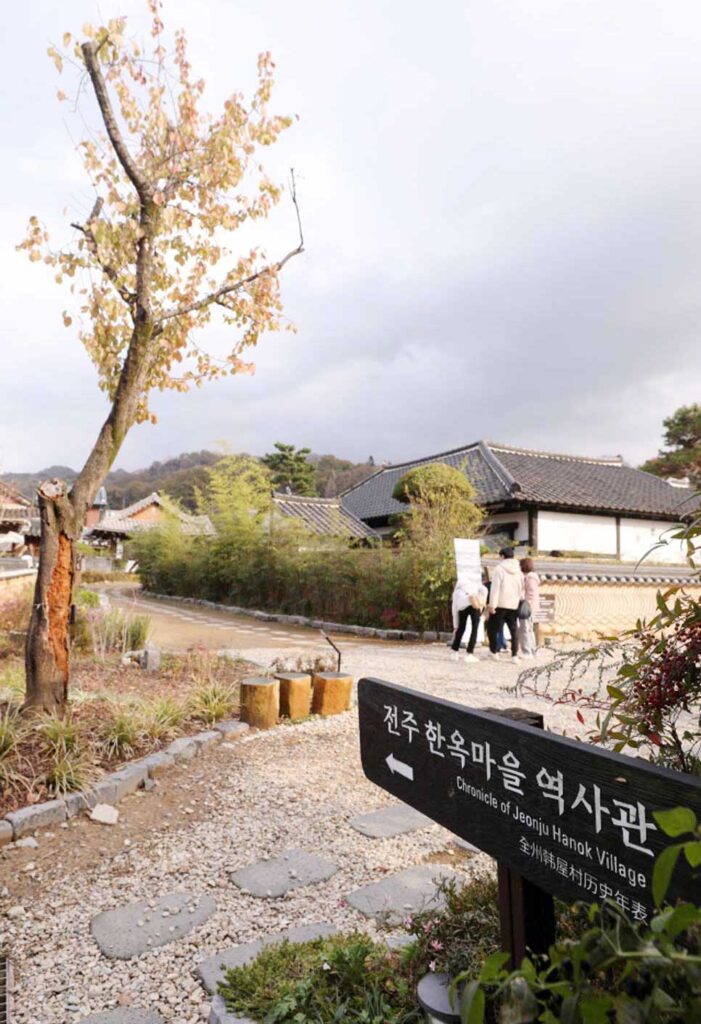


▲Directions to Jeonju Hanok Village History Museum
“The Jeonju Hanok Village History Museum: Depicting the Evolution and History of Jeonju Hanok Village”
Located in the renowned tourist destination of Jeonju Hanok Village, the Jeonju Hanok Village History Museum, opened in 2018, aims to showcase the village’s identity. Visitors to the museum can thoroughly enjoy learning about the village’s evolution and history.

2023 Special Exhibition at Jeonju Hanok Village History Museum: ‘Wind and Custom Direction, Jeonju’s South Gate: Pungnammun’
The Jeonju Hanok Village History Museum is currently hosting a special exhibition titled ‘Wind and Custom Direction, Jeonju’s South Gate: Pungnammun’, focusing on the 600-year history of the Pungnammun Gate.
The Pungnammun Gate, one of the four main gates of the Jeonju Fortress and still standing, provides an uncommon chance to explore the history of the Southern Market in this exhibition.

▲External view of the exhibition hall hosting ‘Wind and Custom Direction, Jeonju’s South Gate: Pungnammun’
“The Pungnammun Gate, Preserving Its Position for Over 600 Years”
The Pungnammun Gate, a landmark intertwined with the local history and life for over 600 years, is the focus of the exhibition. The exhibition is divided into four parts: the survival of ‘Pungnammun’, the only one of the old four gates of Jeonju; the architectural details and plaque of Pungnammun; the ‘Southern Market’, once a major logistics hub in Honam; and the ‘Under-the-Bridge Market’ from the era of Jeonju’s transformation.


▲Inside view of the exhibition hall where the special exhibition is held.
“A Journey Back in Time to Pungnammun”
Understanding the full intention of exhibition curators, particularly in historical exhibits, can be challenging. This invites an imaginative journey back in time to the historical Pungnammun.
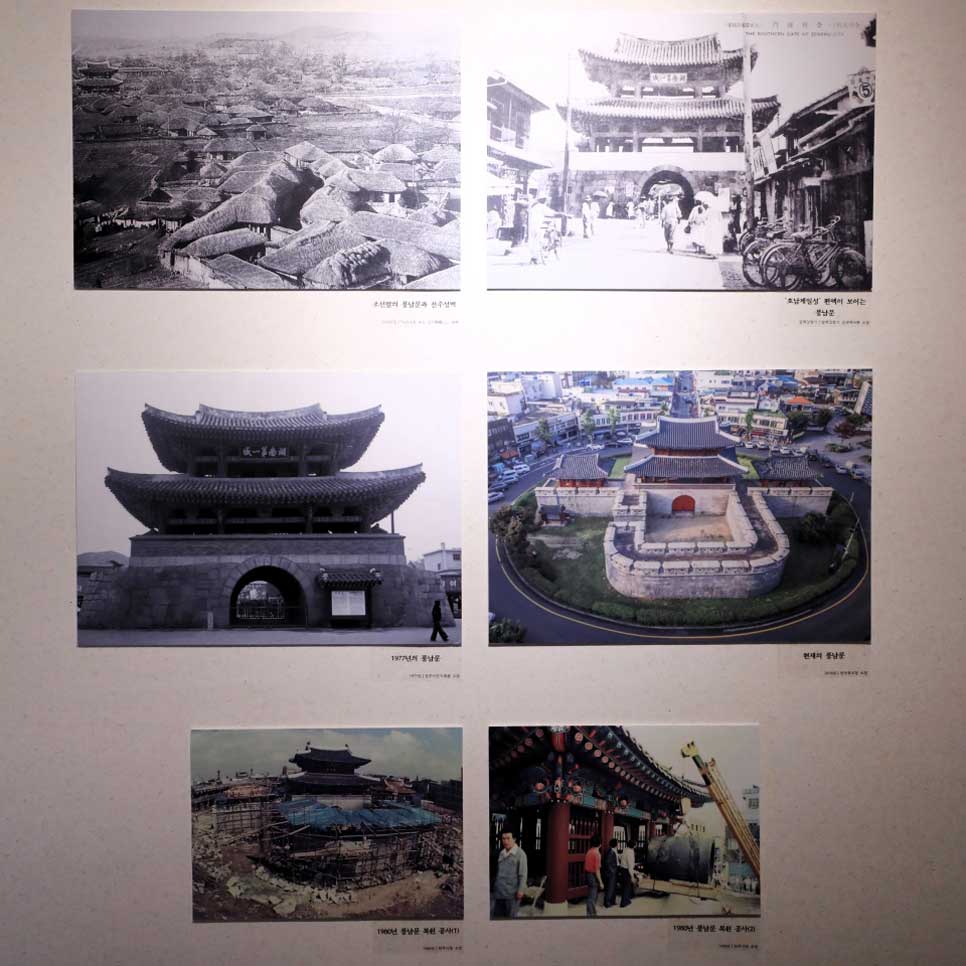
▲The Pungnammun Gate through different times, showing varied appearances along with its surroundings.
Built in 1388 during the late Goryeo Dynasty, Pungnammun was the southern main gate of the Jeonju Fortress, encircling the city where the Jeolla provincial office was situated. Originally, there were four gates in Jeonju, one for each cardinal direction, and city walls, but today only Pungnammun survives, a consequence of the Japanese colonial era.
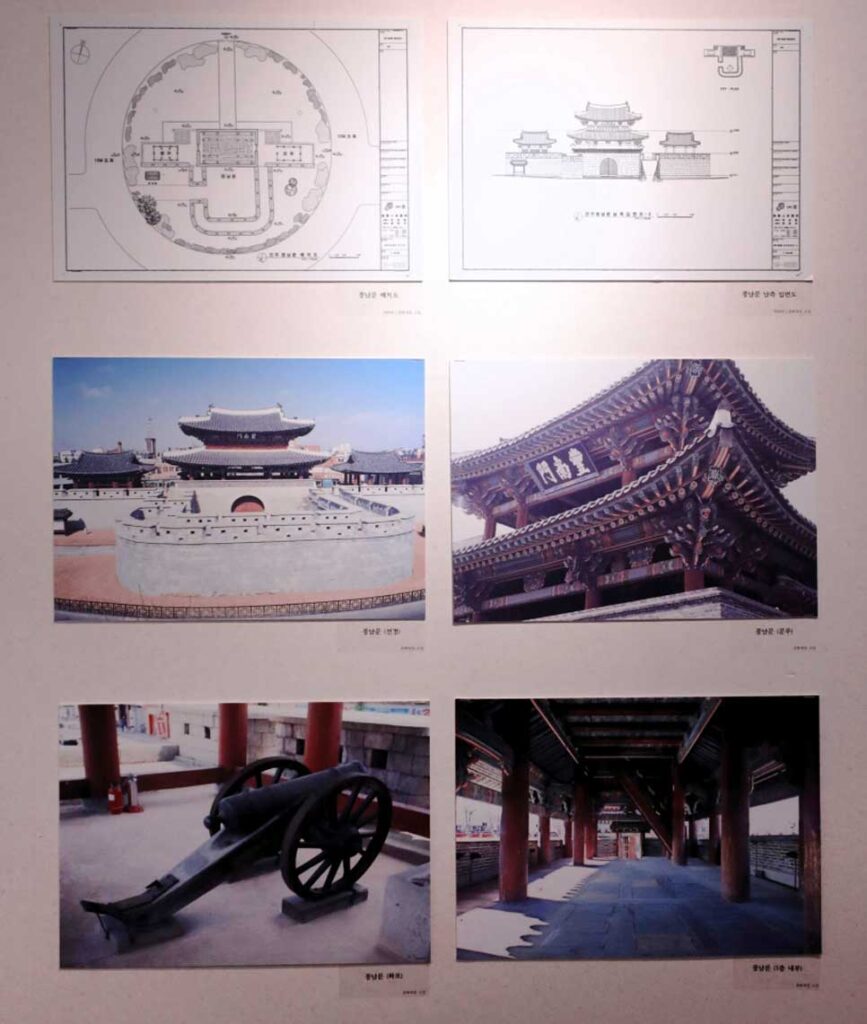
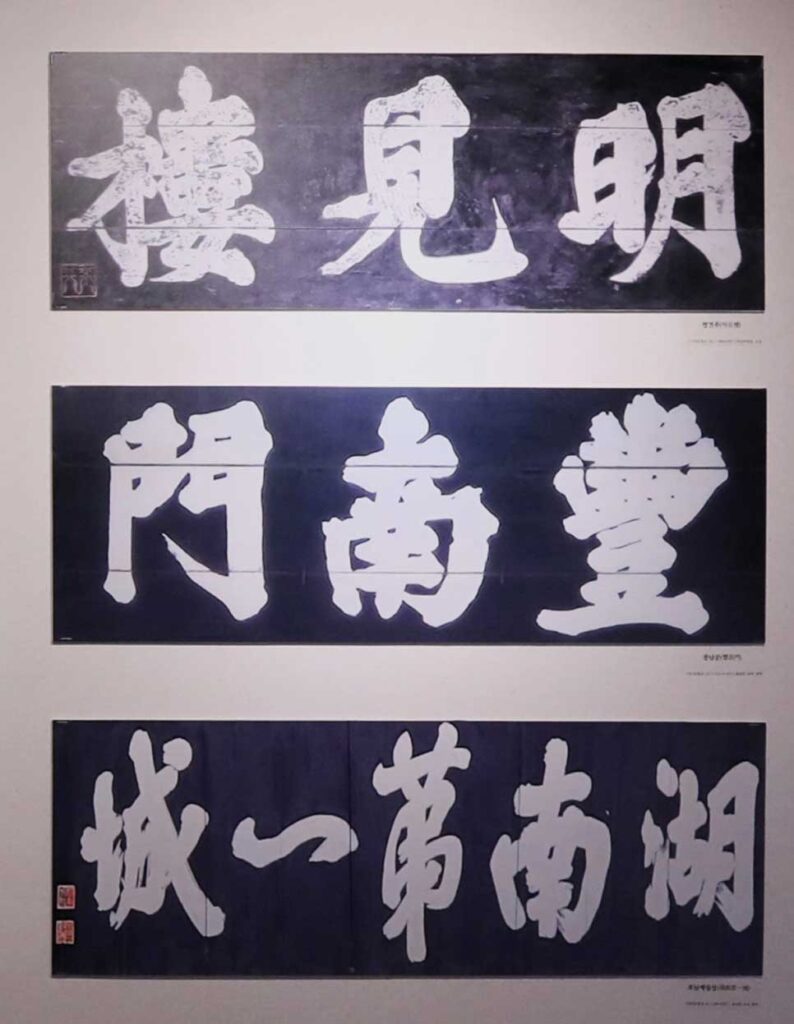
▲Architectural details and historical photographs related to the plaque of Pungnammun.
The gates of Jeonju Fortress were destroyed during the Japanese invasions of Korea but were rebuilt and reduced in size by Jo Hyun-myung during King Yeongjo’s reign. The south gate was named ‘Myeonggyeonru’ at that time.
Sadly, Myeonggyeonru was also destroyed by fire. Later, Hong Nak-in, Governor of Jeolla Province, renamed the reconstructed gates, taking one character each from the Chinese words for ‘Wind’ and ‘Custom’. This resulted in the names ‘Pungnammun’ for the south gate and ‘Paeseomun’ for the west gate.


▲A curator explaining the old maps of Jeonju and the historical importance of Omokdae.

▲A traditional map of the Honam region.
▲The contemporary map of Jeonju Hanok Village.
Viewing Jeonju from both inside and outside the city walls through old maps offers an intriguing perspective. Inside, the presence of Gyeonggijeon Shrine, where Taejo’s portrait was kept, along with the abundant red peach blossoms, indicates Jeonju’s long-standing association with peach cultivation.
The view from Omokdae hill outside the city walls suggests an imminent feast, bringing to mind images of its vibrant past.
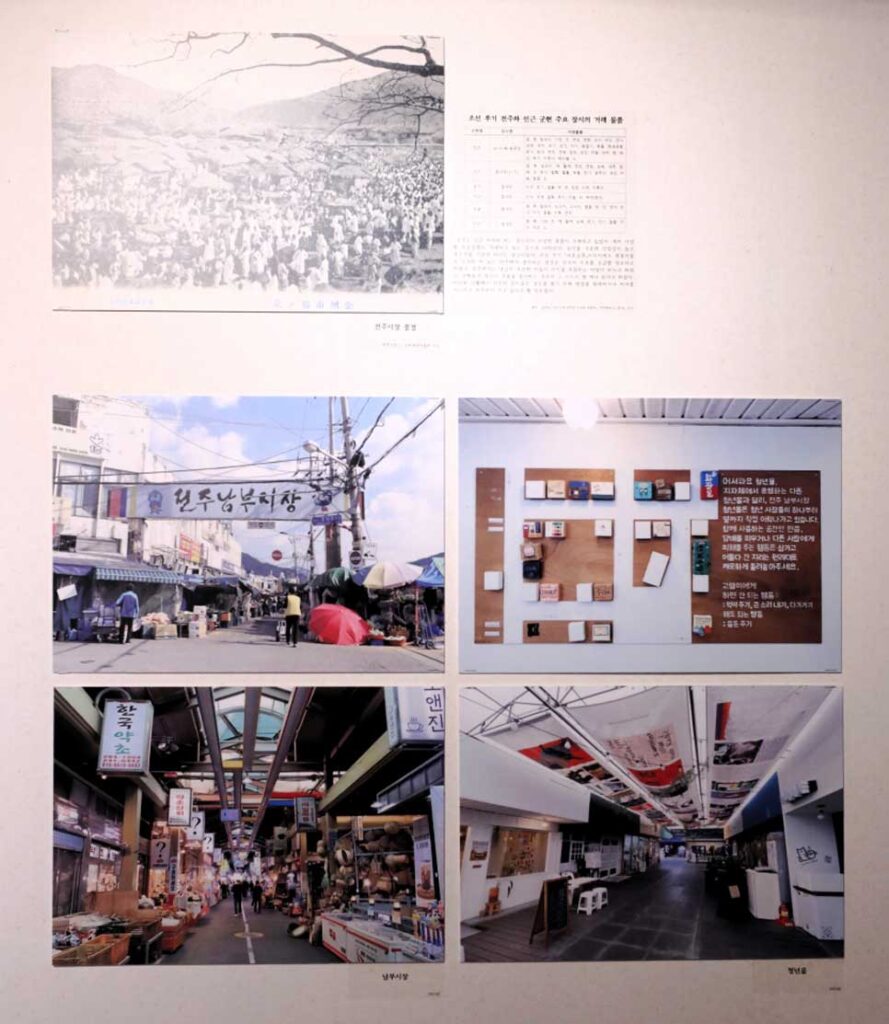
▲The transformation of Nambo Market, located outside the South Gate.
▲The ‘doe’ and ‘abacus’ once used by merchants at Ssajeon Bridge.
The market outside the South Gate, known as Nambo Market, is also shown. It was a central administrative, judicial, and commercial area in Jeolla Province. The exhibit includes the story of Ssajeon Bridge, named due to the marketplace underneath Jeonju Bridge, and showcases old trading items like ‘doe’ and ‘abacus’ used by merchants.
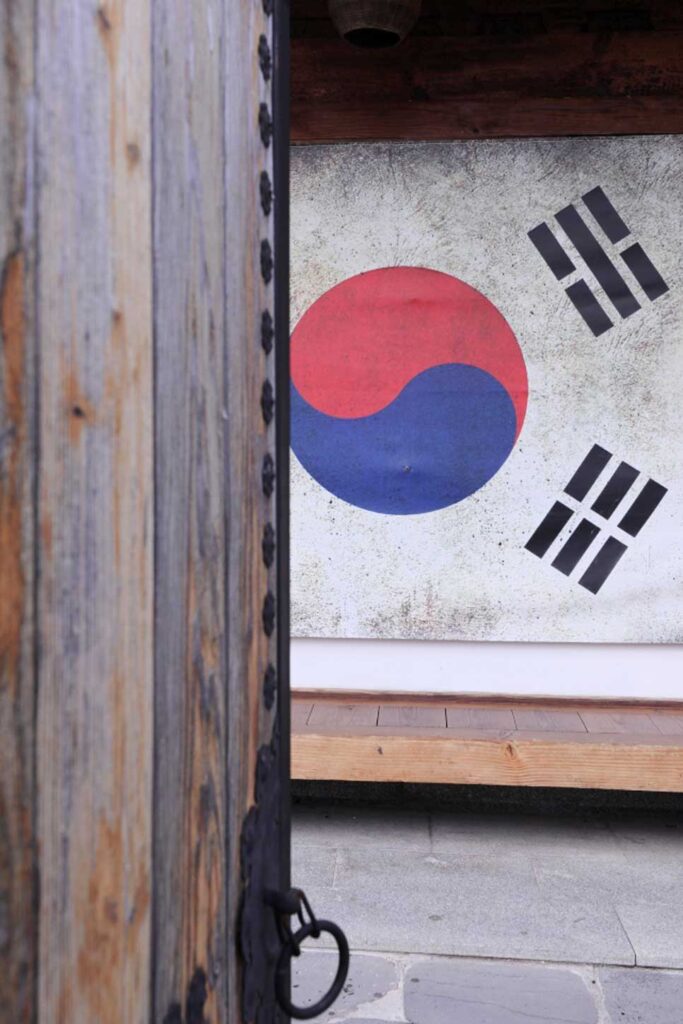
“An experience that offered a deeper understanding of Jeonju.”
The Jeonju Hanok Village History Museum, attracting over 50,000 visitors each year since its opening. This leads to the question: What draws so many tourists to this location? It’s probably the widespread interest in learning more about our history and culture.


Tourists leisurely exploring Hanok Village.
During holidays, families and couples visiting Jeonju engage in coloring activities at the Jeonju Hanok Village History Museum, enjoying their final moments there.
Watching their young son exclaiming with joy, “The door snack was delicious!” and their daughter deeply engaged in coloring, they spend a peaceful afternoon in a Hanok, smiling at these moments.

▲Located opposite the special exhibition room is the permanent exhibition hall of the Jeonju Hanok Village History Museum.
Visitors who have sufficiently explored Pungnammun are encouraged to visit the permanent exhibition hall across, which offers a comprehensive view of the history, origins, and changes of Jeonju Hanok Village.
Engaging with the people of Hanok Village and viewing its past and present in 3D images of key landmarks can give visitors a feeling akin to time-traveling back to the Joseon Dynasty.

“A space for encountering the memories and history of Hanok Village.”
On snowy or extremely cold winter days in Jeonju, a visit to the Jeonju Hanok Village History Museum is recommended for a moment of rest, where visitors can enjoy exhibitions and activities.
This venue serves as a space for relaxation, allowing locals to reconnect with the Hanok Village memories, and tourists to learn about its history.
2023 Special Exhibition at the Jeonju Hanok Village History Museum
‘Direction of Wind and Customs, Jeonju’s South Gate: Pungnammun’
– Exhibition Period: Until 23.1.28 (Sunday)
– Exhibition Hours: 10 AM to 6 PM (Closed on Mondays)
– Admission: Free
– Contact: 063-286-5125
📍Jeonju Hanok Village History Museum
17-10 Choemyeonghui-gil, Pungnam-dong, Wansan-gu, Jeonju-si, Jeollabuk-do, South Korea

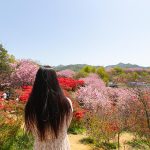
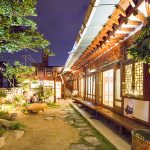

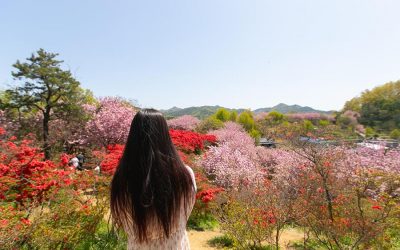

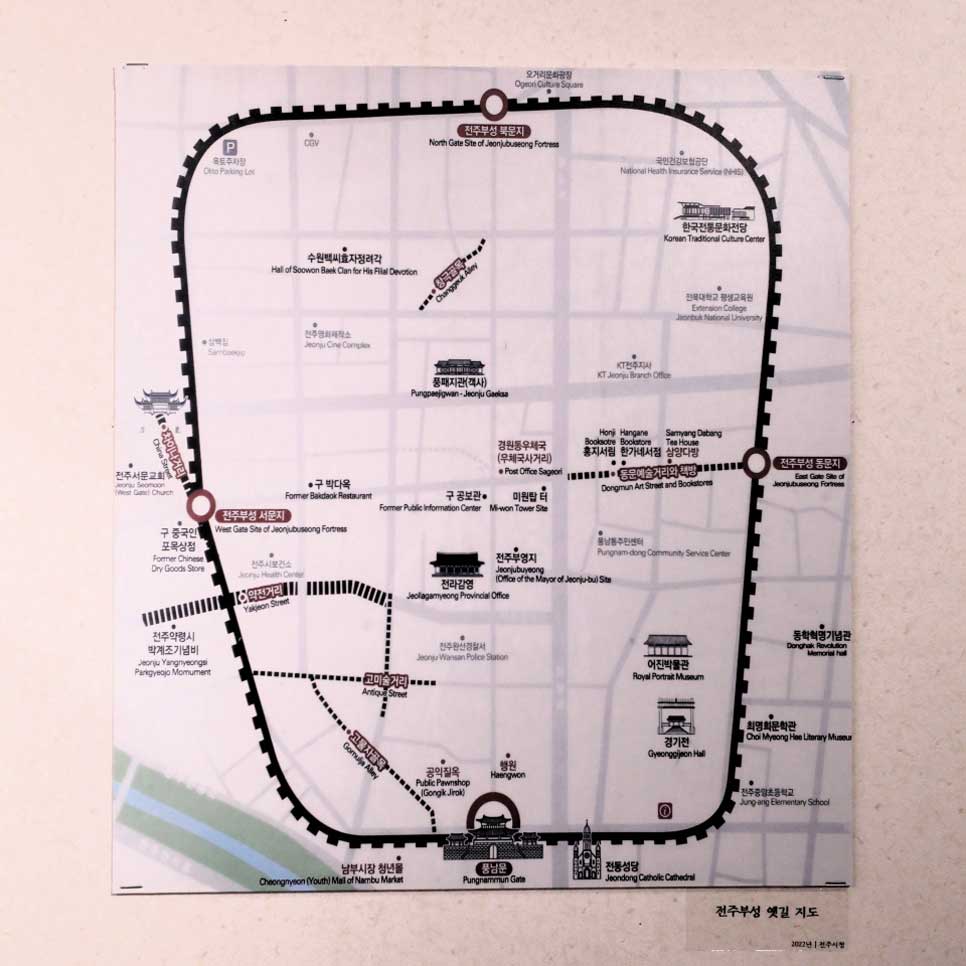

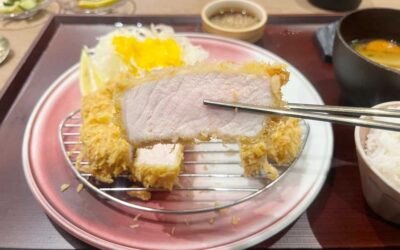
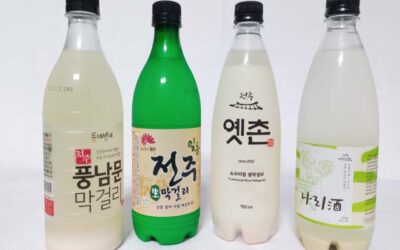
Recent Comments